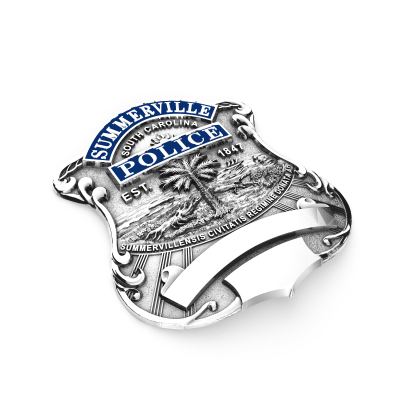What are the different types of electroplate finishes at Smith & Warren?
Learn more about gold, silver, and two-tone finish options.
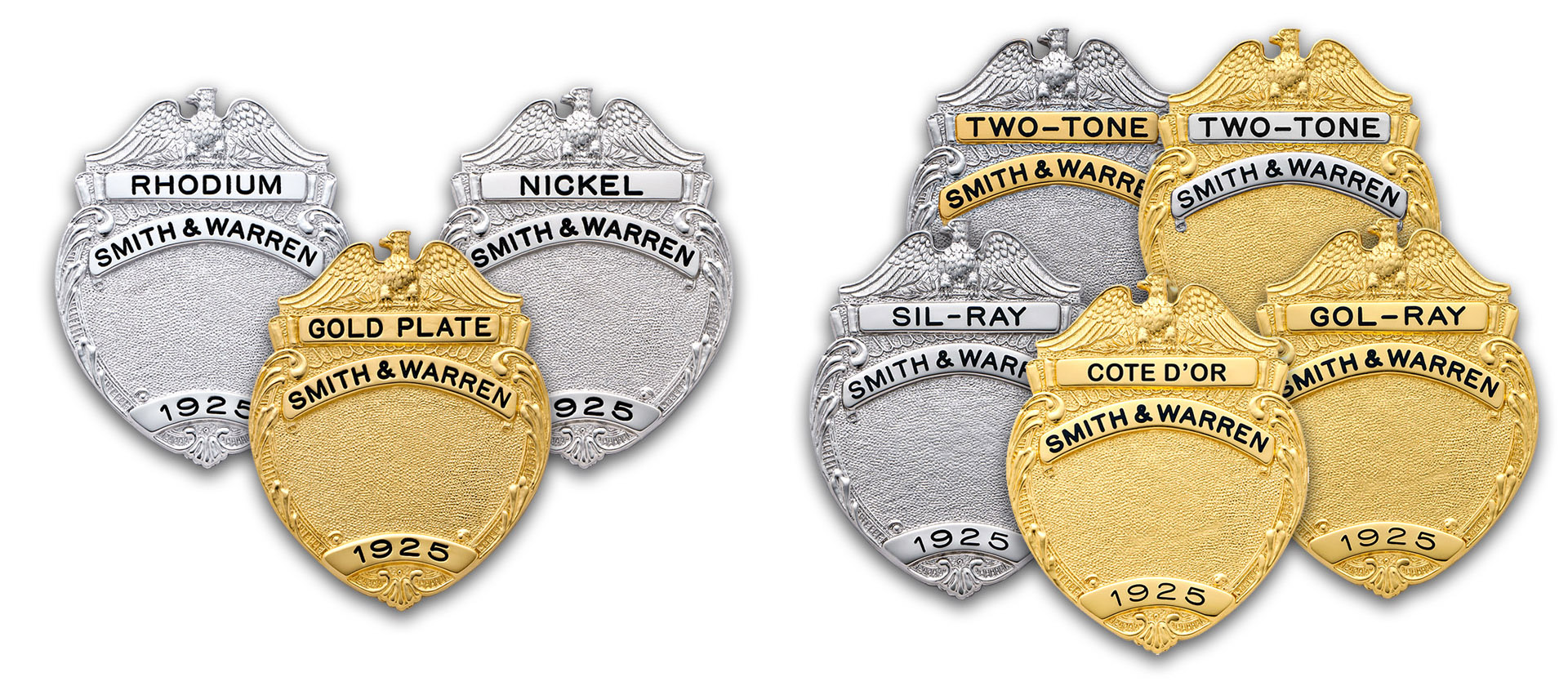
What comes to mind when you think of a metallic finish for a badge? Quite possibly you thought a badge finish could be either gold or silver, and that is partially correct, but there are choices! Different brass alloys can be used to make a gold or silver badge and likewise, there are different types of finishes to produce gold or silver badges.
In this article, we explore the variety of electroplate finishes available on Smith & Warren badges. We will also learn about subtle color differences and which types of finishes are standard versus premium, including two-tone badge finishes. We will look at other reasons to choose one finish over another, including rank or allergies!
Electroplating is a surface coating process whereby a layer of metal is applied over another through an electrolytic process. Aside from giving the badge its distinctive color, electroplating is used to increase wear resistance, add corrosion protection, and boost aesthetic appeal. There are gold and silver options in both a standard and premium electroplated finish
Standard Finishes
Standard Silver Electroplate Finish
Nickel Electroplate
Nickel serves as the base coating for all electroplated finishes. On its own, it has an attractive and durable silver-tone finish. Nickel will be bright when it leaves the factory, but over time will darken slightly.
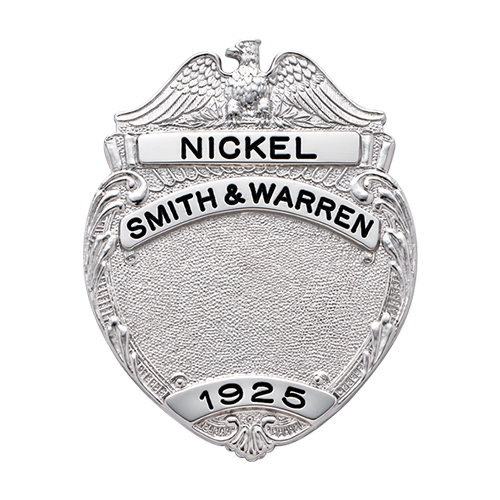
Rhodium
Rhodium is a bright and brilliant precious metal finish that is silver-tone in color and will not tarnish. Rhodium is a very popular finish because of its awesome, long-lasting color and durability.
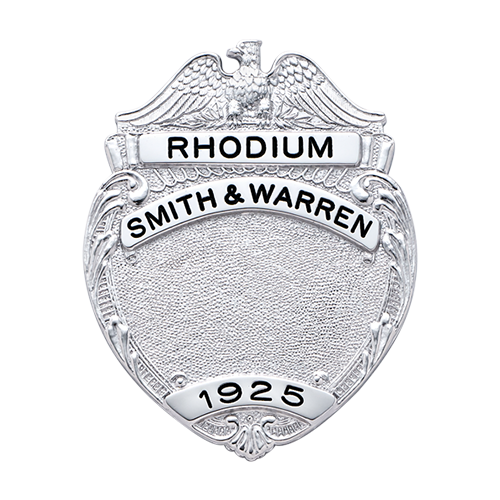
Standard Gold Electroplate Finish
Gold Electroplate
A high-carat gold (22K+) is applied over the nickel base coating. While hardeners are added to the gold to increase its durability, gold may show some wear over time as it is an inherently soft material.
Smith & Warren premium finishes are designed for maximum durability. The premium finishes combine high-quality electroplated layers with baked protective coatings to create a badge that, with proper care, will be resistant to abrasion and will maintain its shine for many years in the field.
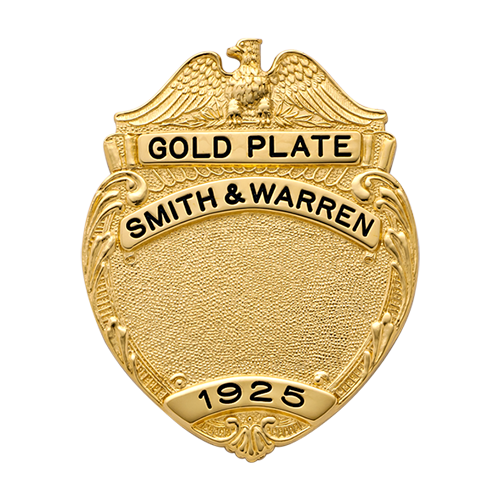
Premium Finishes
Premium Silver Electroplate Finish
Sil-Ray™
A proprietary plating process whereby layers of silver-tone material are applied over highly polished brass. A hard protective coating is baked onto the surface of the badge. This brilliant silver finish has a traditional look and will stand the test of time.
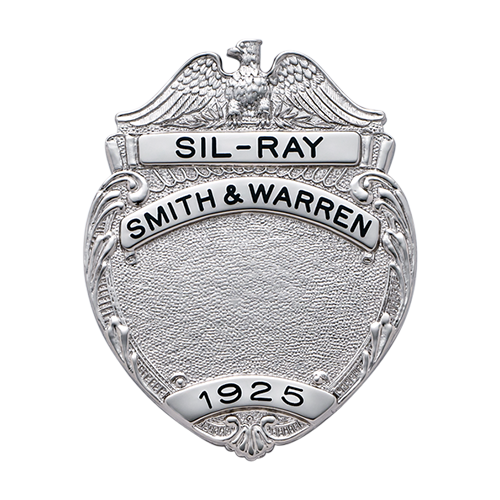
Premium Gold Electroplate Finish
Gol-Ray™
The most durable gold finish begins with the application of multiple layers of gold through an electroplating process. We then apply a hard-baked protective clear coat to lock it in. The result is a gold finish that, with proper care, will maintain its brilliance for many years.
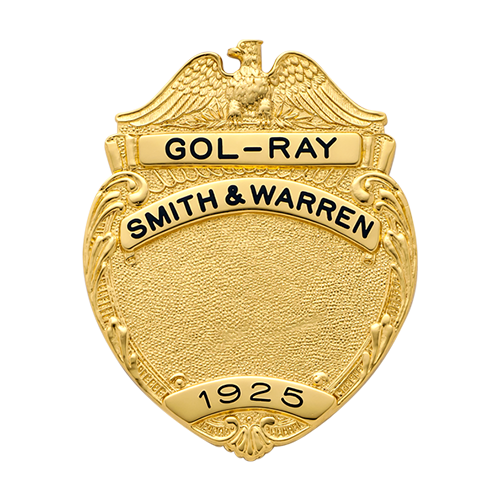
Cote d'Or
Cote d’Or, also known as Heavy Gold Electroplate, is a thick coating of 24k gold applied over a nickel base coating. Cote d'Or is considered a decorative finish and is popular for medals and badges used for plaques or presentations. For brilliance, choose Cote d'Or, but for maximum durability we recommend Gol-Ray.
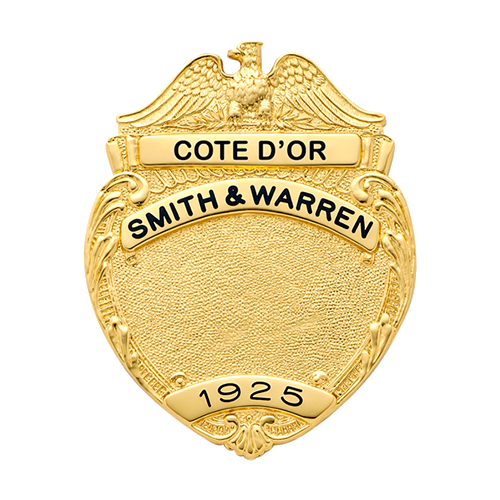
Premium Two-Tone Electroplate Finish
A special design and manufacturing effect is to use both gold and silver metal elements on a badge. This results in a striking two-tone badge. Typically the badge will be one color and the panels will be in another. Two-tone finishes can also be used to highlight special elements like a landmark building, or special symbols on a badge to enhance their visibility on a custom badge.
Two-Tone
The best of both worlds, Gol-Ray™ and Sil-Ray™ combine to form a two-tone finish that is bright, durable, and consistent.
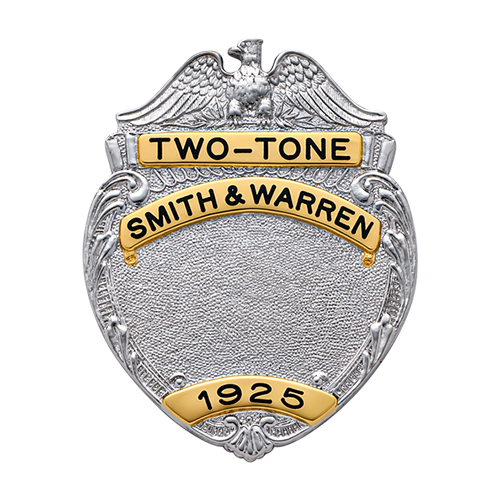
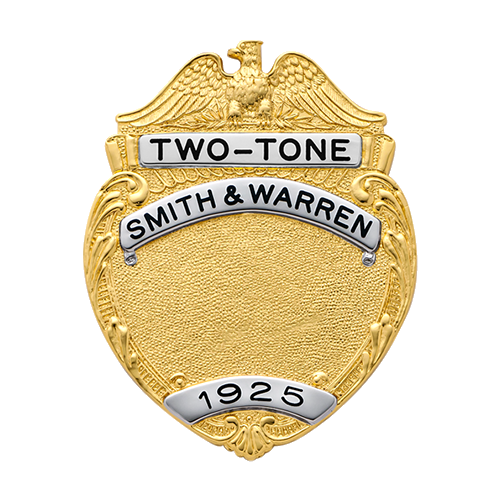
What are some reasons to choose a finish, other than color and cost?
Historical Tradition
Your department might have a longstanding tradition of either gold or silver badges. Your department historian will be able to fill you in on the history of your badge and might even have photos in the archives.
Personal Preference
Sometimes it is simply personal preference, the department decision-maker likes one finish over another. Two-tone finishes give you the best of both worlds and often help make special details and elements on a badge stand out.
Badge Finish Color to Signify Rank
In some law enforcement agencies, the color of a badge can indeed symbolize an officer's rank or position within the organization. There is no universal standard for badge colors, and practices can vary between different agencies and jurisdictions. Gold and then silver colors are used for higher ranks, while lower-ranking officers may have badges with nickel or black finishes. Additionally, the badge design itself may incorporate different symbols or features to indicate rank or specialization.
Allergic Reaction to Metal
Metals can cause allergic reactions in some individuals. These allergies are typically a type of contact dermatitis known as metal hypersensitivity or metal allergy. Often, an allergy is discovered from wearing jewelry, but brass, copper, zinc, and nickel can cause an allergic reaction. Gold is considered inert and less likely to cause allergies, some individuals may be allergic to certain alloys used in gold jewelry, especially if the gold contains nickel or other allergenic metals.
Nickel allergies are the most common since this is a widely used metal for jewelry, keys, and some clothes fasteners like snaps and zippers. Contact with skin is generally how the sensitivity becomes noticeable due to a skin rash. In the case of a badge, a second coat of Rhodium or Gold Electroplate, or a premium finish, would cover the nickel and prevent skin exposure. While this is a somewhat unique situation for selecting a badge finish, we understand that there are many different reasons for selecting a badge finish.
All of our badge finishes are available for viewing and selection in VisualBadge. If you need more information about which finish might be best for your department, please contact us.
Recommended articles in our Learning Center
Recommended articles in our Learning Center
What’s the difference between non-plated and plated badges?
What are the different types of brass alloys used to make badges?


